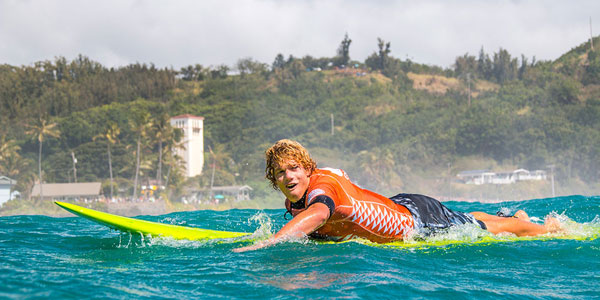Unless you’ve been off the grid lately, you’ve no doubt seen surfing’s favorite son JJF tackling some breathtakingly huge Waimea during the Quiksilver Eddie. John John caught the best waves of the day riding his Pyzel Crazy Train gun, took the win on what will forever be remembered as a historic day in big wave surfing. REAL’s Trip Forman caught up with shaper Jon Pyzel to dissect John Florence’s mean green giant wave killing machine. Here’s the tech and some interesting insight as to what’s moving and shaking in the world of big wave board design:
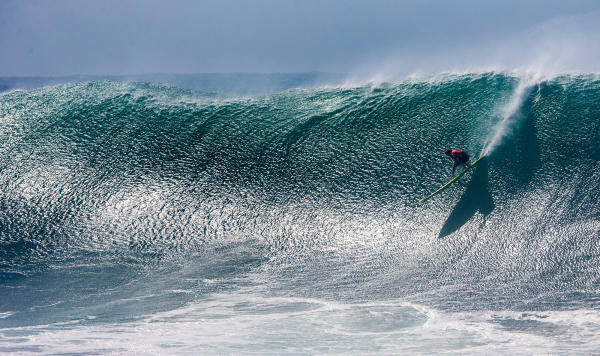
The Board: Pyzel “Crazy Train” Quad
Dimensions: 10’5″ x 20.75″ x 3.63″
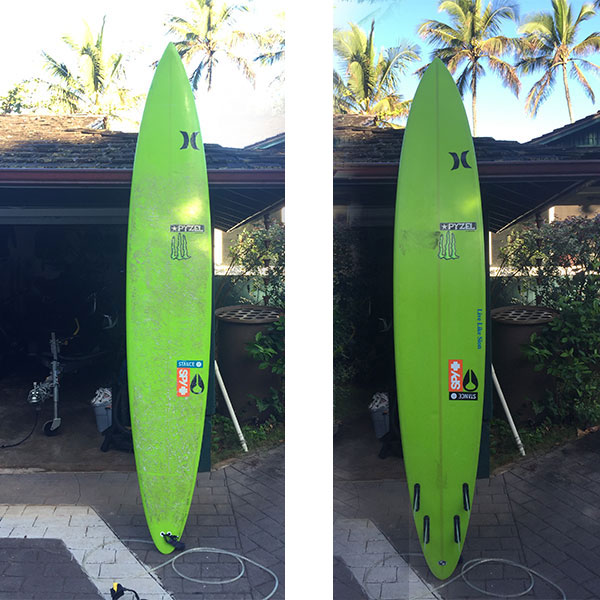
REAL:How does this model differ from your Padillac model?
Pyzel: It’s just a giant version of the Padillac– exact same design.
Tell us about the construction of John John’s Crazy Train…
Construction: PU/Poly
Blank: Arctic Green Foam PU blank with a 1/2″ thick Bass stringer
Glass Schedule: 2oz x 6oz deck / 2oz x 6oz bottom
Fin configuration: quad
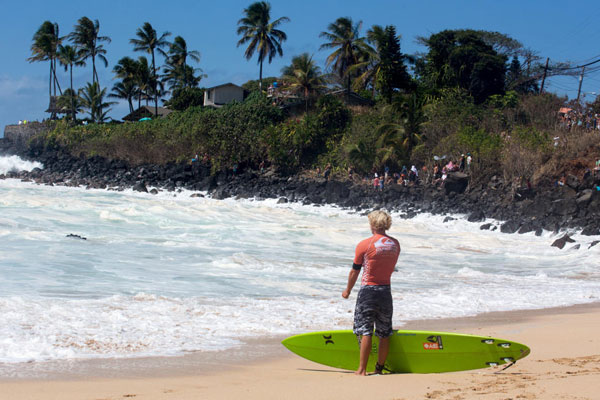
Which fin set is John John running in this board?
Future fins custom big wave quads – G10 glass
How do these fins differ from fins you’d put on a shortboard?
They are smaller and stiffer than normal quads.
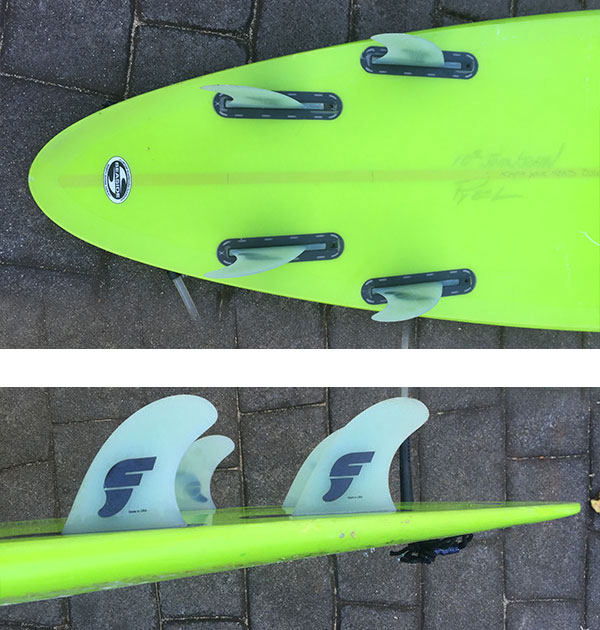
Who picked the color for this board?
Me– Wasabi Green, it stands out really well in whitewater so it adds to the safety factor in big surf.
What’s the bottom shape?
Rolled Vee in the nose, slight Vee and double concave throughout back 3/4s of the board, flat Vee in last 18” of tail.
What’s the reasoning behind 10’5 for the length?
It’s the biggest board I can make from the Arctic 10’5” blank!
What is John looking for in performance from this board?
Paddle power, easy entry, smooth handling, speed and control.
What are you trying achieve with this bottom shape compared to what you would put into a shortboard for smaller waves?
I want it to be fast, but not get too on top of the water. You go so fast on these waves, but you want to feel like you can push hard on your bottom turn or set an edge without losing control.
Who else was riding your boards in the Eddie? Can you share models and dimensions for each or is that a trade secret?
JJ, Koa Rothman, Mark Healey, and Bruce Irons were all on my boards. All the boards were similar dimensions – between 10” and 10’5” and around 20.75 wide and all were 3.63 thick. I like those numbers for most guys boards, they seem to be pretty universal unless the guy is a lot bigger.
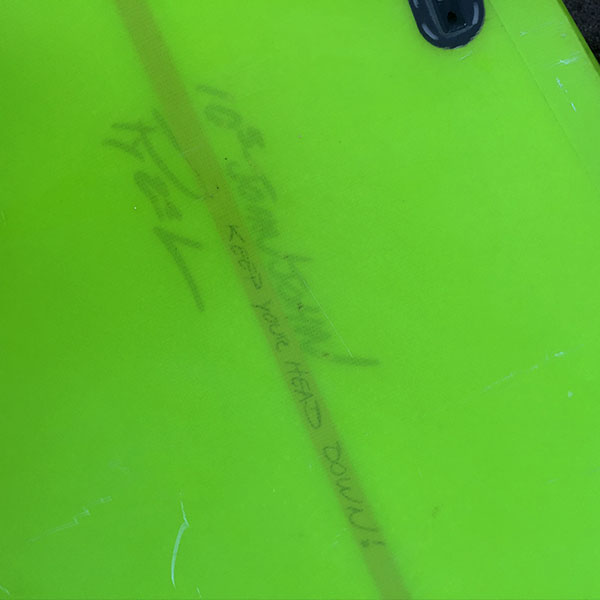
Some of the boards out there looked long, flat and sticky compared to John’s board. What’s your secret?
I think that my rocker is just really smooth and the bottom contours help to keep it in the water and reduce that bouncing you may have seen on other boards. I leave a lot of thickness through the front of the boards too, which makes them less likely to bounce. (Also JJ is a pretty good surfer, haha.)
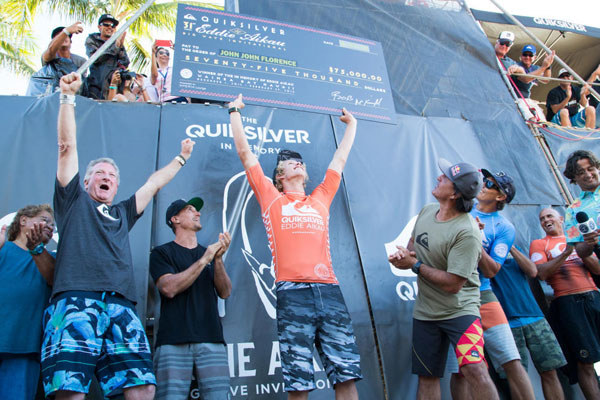
What have been the most notable changes in big wave board design since the last time they ran the Eddie in 2009?
I think boards have moved back to thicker, more user friendly and solid. Boards from only a few years ago were overly foiled and rockered out- more like giant Pipe guns than actual deep-water, big wave boards. If you look back to the 1980’s, those boards were flatter rockered and chunky, which is kind of what the way they are moving back to now, only ours are more refined than the ’80’s boards.
What do these design changes do for the surfer?
Mostly guys are now actually “surfing” big waves, where before they were just hanging on for the ride and hoping they survived. The performance levels have gone up like 900% in the past couple of years, and I am just trying to make sure that the boards can keep up with what the surfers want to do, and also give them confidence when they paddle for a monster.
How long has John had this board and where else has he surfed it?
That board is 2 years old and has been ridden at Waimea, Outer Log Cabins, Jaws, and a bunch of the outer reef waves here on Oahu.
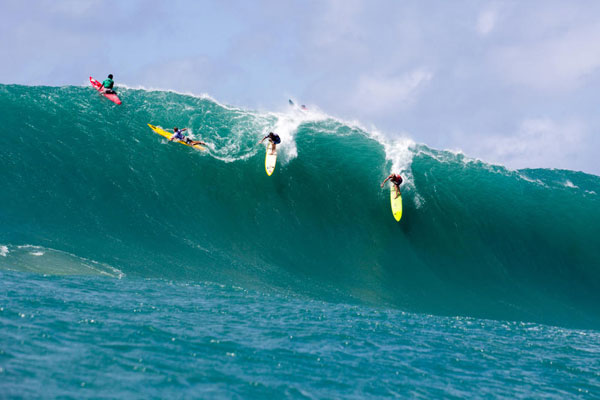
The WCT and the BWT used to be two different groups of surfers. Now with John winning Waimea and Josh Kerr winning Todos Santos, do see more world tour pros crossing over into big waves in the future?
It’s hard to say for sure, but it’s pretty simple– the best surfers are on the WCT tour and those guys can surf so good that riding big waves is a lot easier for them than it is for most surfers! I think guys like that can see big waves in a whole different way than a lot of other big wave guys– they have so much skill that it almost slows everything down and lets them make waves that a guy with less ability would just eat shit on!
